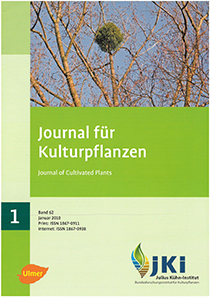New details on the pathogenesis of ash dieback
DOI:
https://doi.org/10.5073/JfK.2010.01.01Keywords:
Chalara fraxinea (teleomorph: Hymenoscyphus albidus), Fraxinus excelsior, nursery saplings, Oomycetes, mycological and histological studiesAbstract
Ash dieback is currently one of the most important tree diseases in Europe. It is already widespread in Northern and Central Europe as well as in some parts of Western and Southern Europe. Trees of the species Fraxinus excelsior an F. angustifolia of all ages on various site types are affected in forests, in the landscape as well as in nurseries and urban plantings. Symptoms include wilting of leaves and young shoots, shoot dieback, premature leaf fall and variously colored bark necroses of different sizes, always lacking exudates. In young trees the disease leads to mortality within a few years, whereas a chronic process can often be observed in older trees. In Germany the impact of the disease varies greatly in different regions, but a countrywide distribution is assumed. Significant damage was especially established in nurseries and forests of Northern Germany.
The paper presents a recent investigation of a large number of naturally infested nursery saplings from Northern Germany. The real infection rates, invasion and spreading strategies of the fungus inside of plant tissues and the role of soil-borne Oomycetes as possible primary or accompanying causal organisms of the disease were examined. The results confirm the dominant role of Chalara fraxinea (teleomorph: Hymenoscyphus albidus) as the causal agent of ash dieback and rule out the role of pathogenic Oomycetes in the disease process. The authors conclude that the fungus is able to spread very effectively in woody tissue as a parasite and does not originate from the root system.
Downloads
Published
Issue
Section
License
The content of the journal is licensed under the Creative Commons Attribution 4.0 License. Any user is free to share and adapt (remix, transform, build upon) the content as long as the original publication is attributed (authors, title, year, journal, issue, pages).
The copyright of the published work remains with the authors. The authors grant the Journal of Cultivated Plants, the Julius Kühn-Institut and the OpenAgrar repository the non-exclusive right to distribute and exploit the work.







